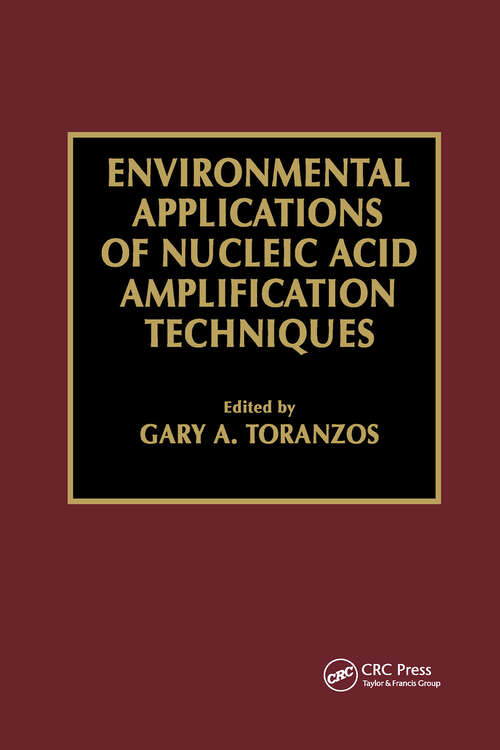Environmental Applications of Nucleic Acid Amplification Technology
By:
Sign Up Now!
Already a Member? Log In
You must be logged into Bookshare to access this title.
Learn about membership options,
or view our freely available titles.
- Synopsis
- From the PrefaceAntibody techniques have allowed us to study microorganisms in situ. However, until recently all methodology lacked the sensitivity necessary for environmental work where microorganisms are in most cases present at very low concentrations or where microbial ecosystems contain a myriad of different organisms. Gene probes have been used successfully for a variety of samples, but this method was still not sensitive enough. The next logical step was the application of the recently developed DNA amplification technique known as the polymerase chain reaction, or PCR. Since then, many laboratories around the world have adopted PCR for environmental work. Samples obtained from soils, water and air are enormously complex because they are unknown mixtures of DNA and other compounds. Thus, procedures for target DNA amplification from the environment require special attention. The PCR has allowed us to go beyond the need for culturing prior to analysis of microbial communities. It has been shown that even microorganisms that can be routinely grown in the laboratory undergo some physiological changes when exposed to the environment. One of these changes (first observed by R. Colwell and colleagues) is known as the viable-but-non-culturable state, and seems to be a common occurrence. Thus, the use of culture techniques paint only part of the picture in terms of microbial behavior under environmental conditions. The ability to amplify nucleic acids by the PCR has brought about a myriad of very ingenious modifications to the technique that can then be used to study complex ecosystems. The manner in which the PCR can be modified is only limited by the need and/or the imagination of the researcher. The first manual dedicated specifically to the analysis (by PCR) of environmental samples, Environmental Applications of Nucleic Acid Amplification Techniques presents state of the art methodology for the detection of microorganisms in soil, water, air samples, as well as the amplification of nucleic acids from fossil samples. The manual gives step-by-step procedures for the analysis of these samples. Although several publications have addressed the use of Polymerase Chain Reaction technique, very few of them have been directed toward the application of this technique to environmental samples. This book fills this gap in the literature.
- Copyright:
- 1997
Book Details
- Book Quality:
- Publisher Quality
- ISBN-13:
- 9781040288986
- Related ISBNs:
- 9781003578970, 9781566764087, 9781040292372
- Publisher:
- CRC Press
- Date of Addition:
- 11/01/24
- Copyrighted By:
- Taylor & Francis Group, LLC. Except as permitted under U.S. Copyright Law, no part of this book may be reprinted, reproduced, transmitted, or utilized in any form by any electronic, mechanical, or other means, now known or hereafter invented, including pho
- Adult content:
- No
- Language:
- English
- Has Image Descriptions:
- No
- Categories:
- Nonfiction, Science
- Submitted By:
- Bookshare Staff
- Usage Restrictions:
- This is a copyrighted book.
